Introduction To Options Portfolio Management
Options Investing Hub ⮞ Portfolio Management
1 RESOURCE
Introduction

Portfolio management is key to consistent profitable investing.
If anyone were to ignore portfolio management - it is only a matter of time that the person will wipe his portfolio.
This is ever so important when it comes to using options as part of your portfolio - because it is easy for people to fall into a trap of overleveraging their portfolio using options.
When it comes to managing your portfolio, remember that we have three core strategies in investing which is covered in the Stock Investing Hub and Options Investing Hub:
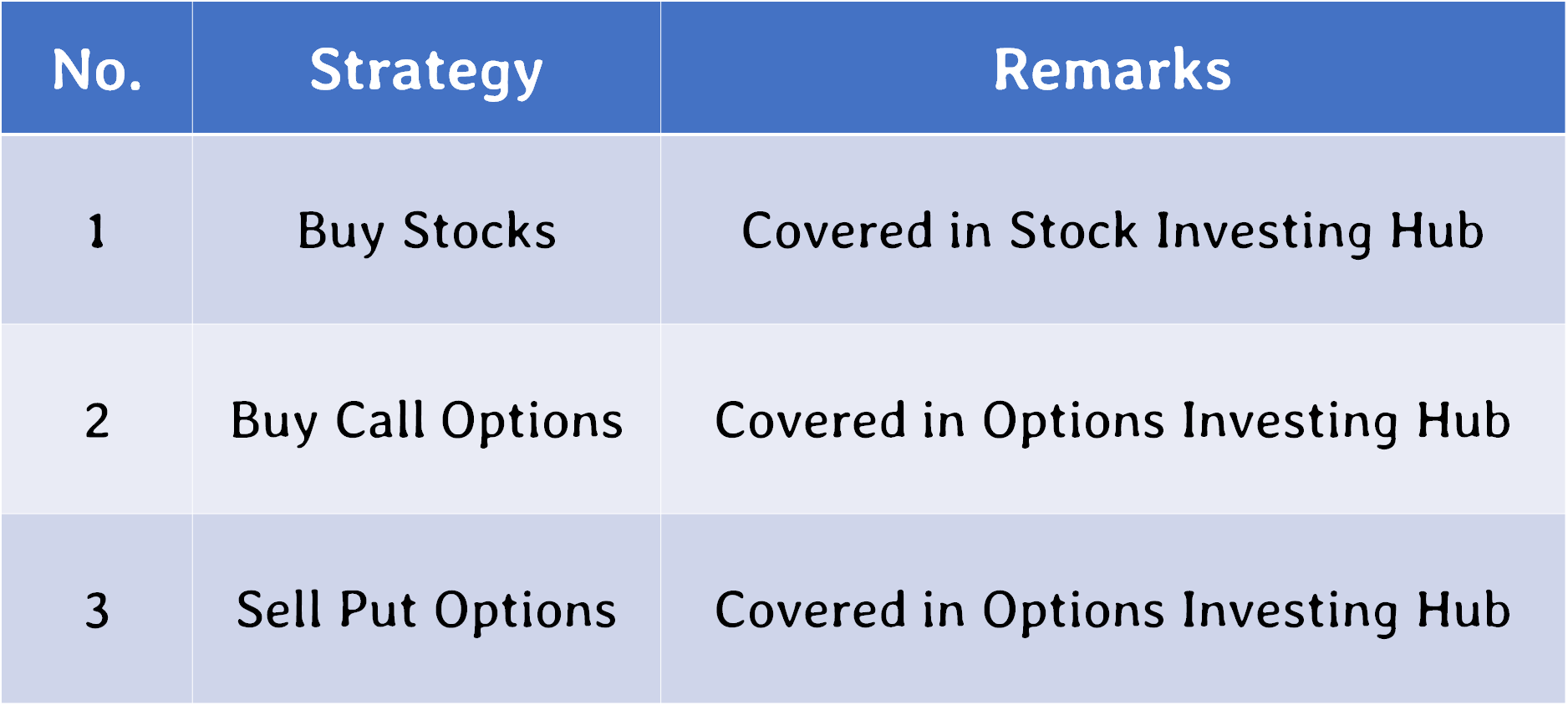
And I have covered all the entry and exit rules for each of the strategy in the two resource hubs.
However, do you have to use all these three strategies?
The answer is "no" - because it really depends on your portfolio size.
And here are a guideline for those who are starting out in investing.
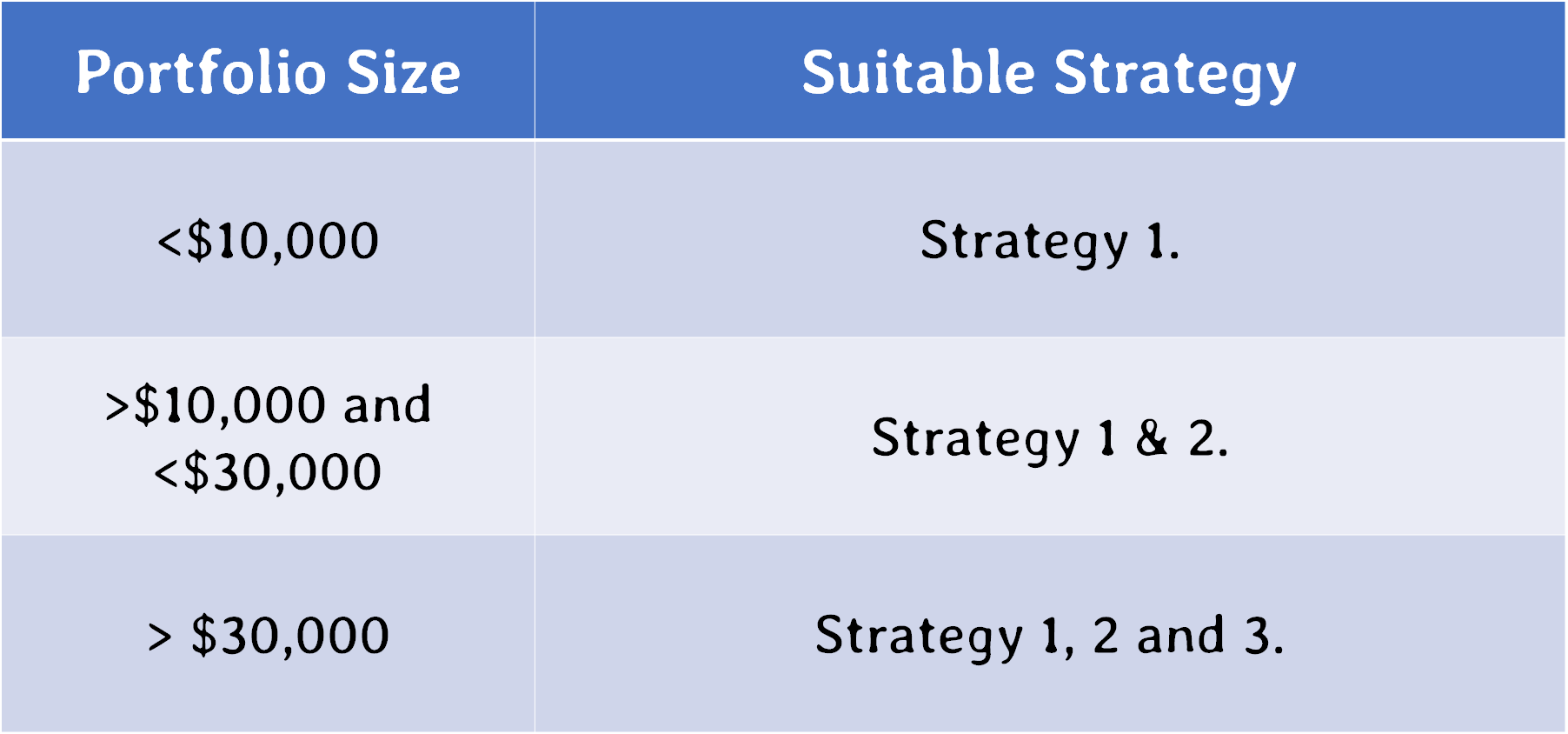
Of course, this is a general guideline that I provided for my students - you may modify them as you get more experienced in investing.
Let me explain the rationale behind this guideline.
Portfolio below $10,000
For portfolio that are below $10,000 - it might be better off just sticking to strategy 1 - which is simply to buy undervalued stocks and hold them to till their exit price using the principles outlined in the Stock Investing Hub.
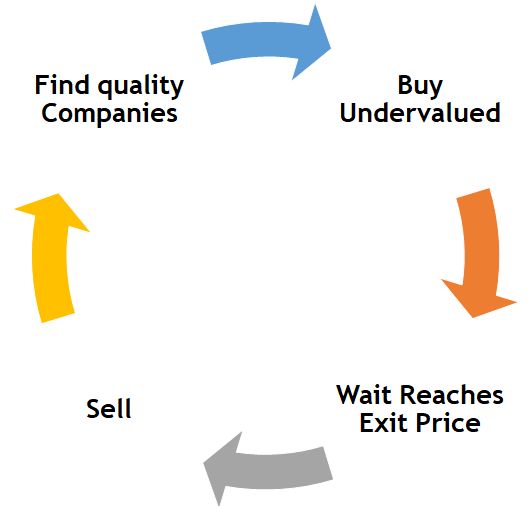
The reason for that is because using strategy 1, you will learn the concept of value investing - which is the foundation of using the other two option strategies.
I know that there are many people with smaller portfolio size who are itching to touch options because of the many testimonials out there on how options made them huge returns.
But remember that options are derivative of stocks - so if you have no idea how to look out for a quality company, then you shouldn't even touch options.
Portfolio > $10,000 but < $30,000
Next, for portfolio size between $10,000 to $30,000 - the guideline allows us to use call options in our portfolio. Of course, with strict portfolio sizing that was mentioned previously.
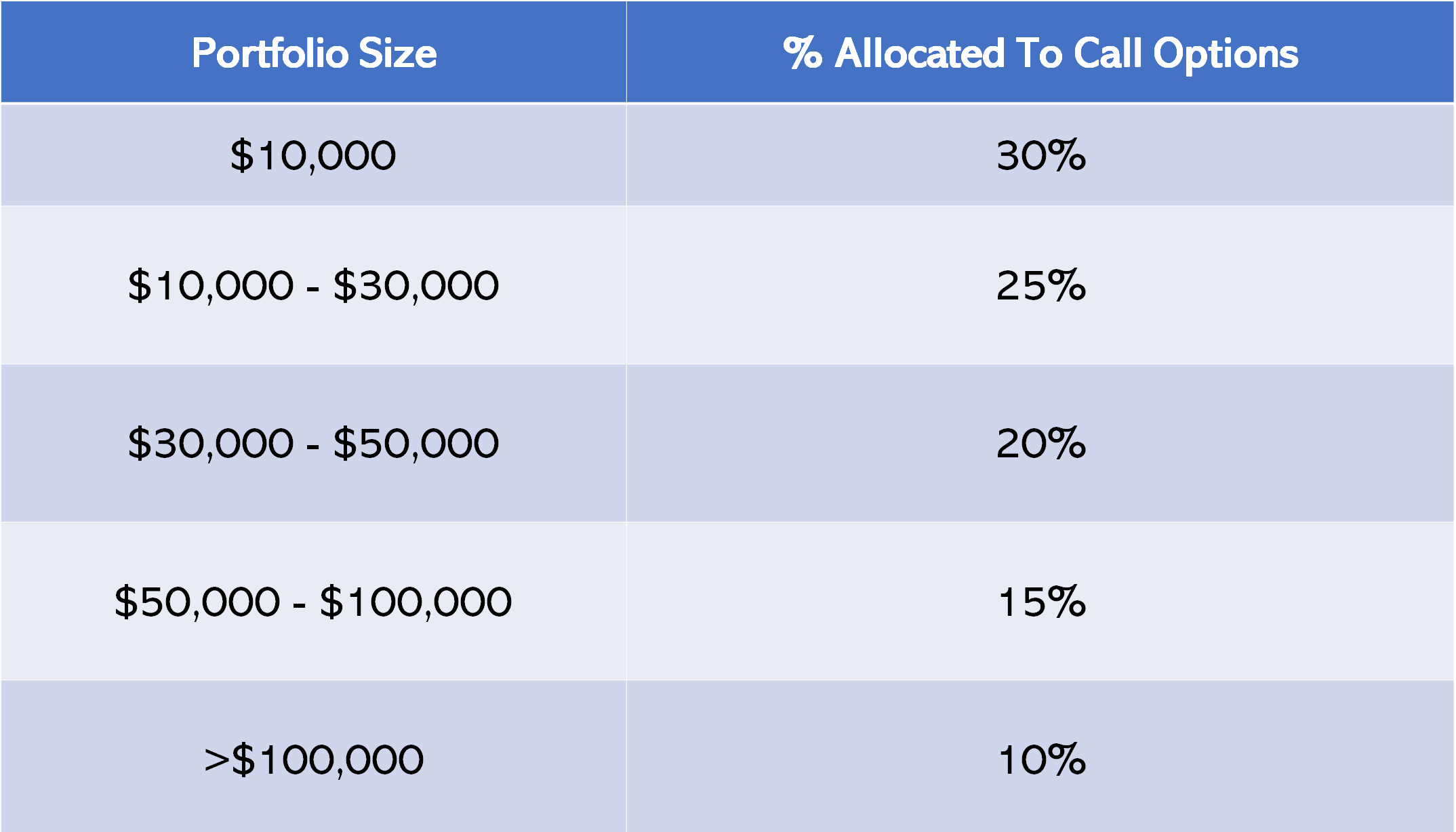
For example, for a $10,000 portfolio - only $3,000 will be allowed to buy call options.
Why is that so?
As much as possible, one should avoid using too many call options on a portfolio, otherwise, the portfolio will be overleveraged.
And a market downturn, will cause a huge drop in portfolio value.
That's why, it is very important that in using call options, to follow the guideline above.
Using the above $10,000 portfolio example, some may wonder, what will be used for the remaining 70%?
Well, the remaining capital will be used in Strategy 1 - buying quality companies at our entry prices.
Now, let's go through some examples to make sure that you understand the concept of portfolio management for this portfolio size.
Example 1a:
Gin started with a portfolio of $15,000. What are the option strategies that he can use?
a. Strategy 1
b. Strategy 1 and 2
c. Strategy 1, 2 and 3
Ans: Well, technically both answers "a" and "b" are correct.
If Gin is not familiar with call options, it is absolutely fine to just start with buying stocks. However, if Gin understands call options, it is also okay to use call options as well as long as he follows the entry rules of call options, especially portfolio sizing.
Example 1b:
Gin decided to use the combination of strategy of 1 and 2 - buying undervalued stocks and call options.
Using the portfolio guidelines, what is the maximum amount that he can use for buying call options?
a. $3,000
b. $3,750
c. $1,500
Ans: The answer is $3,750. Based on the portfolio guideline, Gin should limit his portfolio allocated to call options for 25%.
Following the guidelines, 25% of $15,000 will be $3,750.
Now, the above examples are people with portfolio size of less than $30,000.
What about those have capital that is more than $30,000?
Portfolio more than $30,000
Firstly, we noticed that strategy 3 is only suitable for people with portfolio size above $30,000.
Remember that strategy 3 is the sell put options strategy - and as explained previously, this strategy requires capital in order to pay for the 100 shares if the put options get exercised.
And since it requires capital, it is more suitable for investors with larger capital - after all, a sell put option requires you to buy 100 shares if the option is exercised.
As a reminder, this was the portfolio guideline for selling put options.
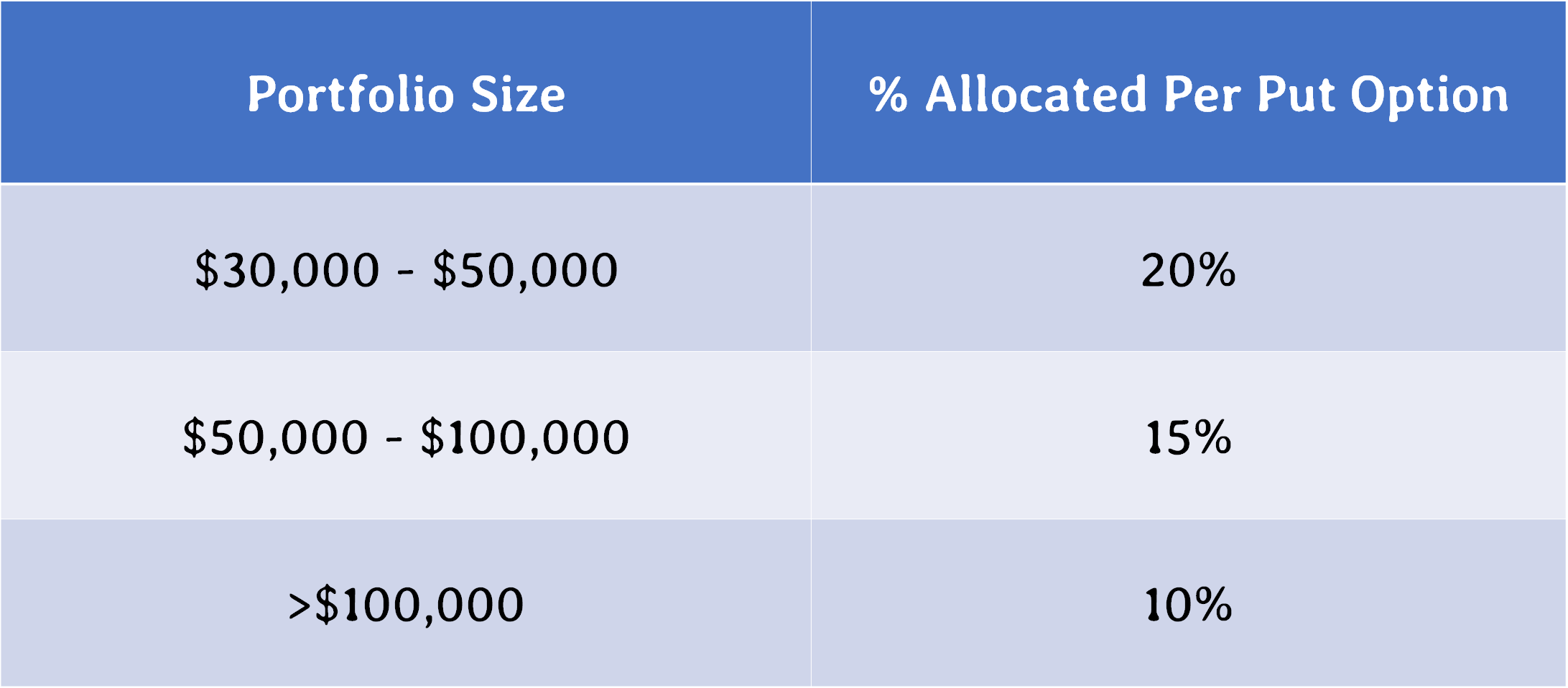
So when have a portfolio of $30,000 - based on the guideline, $6000 could be allocated to a put option - which means a maximum strike price of $60.
As a reminder, the reason for such a portfolio diversification is so that even if the put option was exercised, the 100 shares do not over-concentrate your portfolio in a single stock.
However, with a portfolio size > $30,000, you could also consider buying call options as well. So here's a summary of the portfolio diversification.
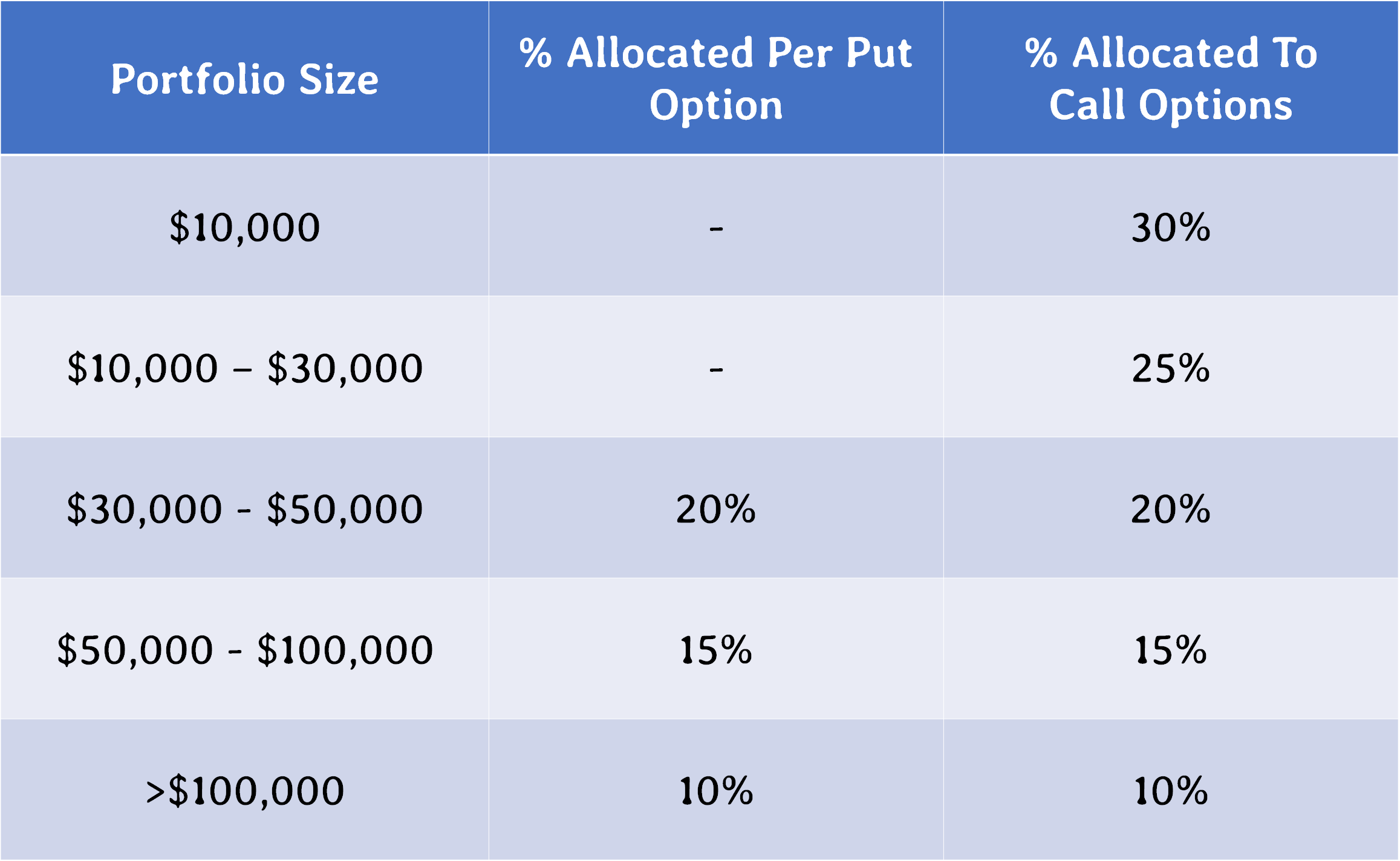
Let's go through some examples, to make sure you understood the content so far.
Example 2a:
Gin has a portfolio of $60,000. How much percentage of his portfolio can he allocate to a put option?
a. 20%
b. 15%
c. 10%
Ans: The answer is 15% - this means it is $9,000 allocated to a put option.
Example 2b:
Following the previous example, what is the strike price of the put option that Gin can sell?
a. 90
b. 100
c. 75
Ans: The answer is 'a' and 'c'.
Remember that $9,000 is allocated to the a single put option. If a strike price of 90 is exercised, this means that $9000 is used in the investment. This will be 15% of Gin's $60,000 portfolio. This is still within the portfolio guideline for stocks.
Even if the strike price of 75 is exercised, this means $7,500 is used as an investment - which is only 12.5% of Gin's $60,000 portfolio. This is also within the portfolio guideline for stocks.
Remember that, at the end of the day, we have to consider whether if the put option being exercised will end up concentrating our portfolio.
And as a guideline, the amount vested in stocks in a portfolio:
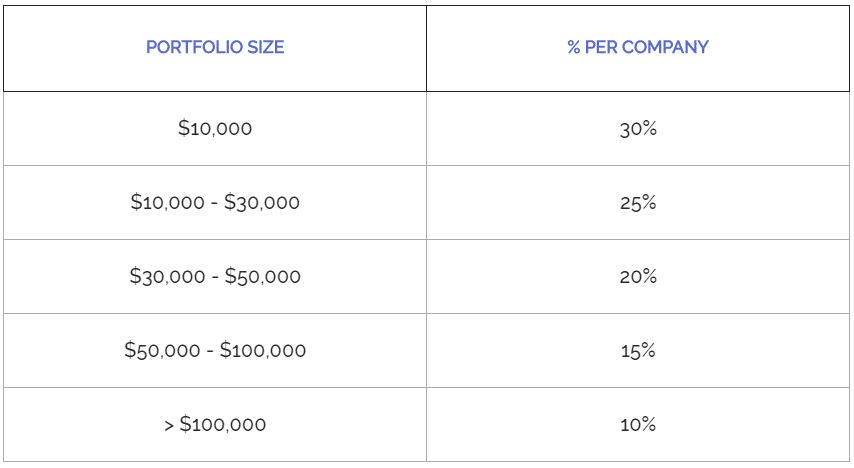
What's Next?
In a nutshell, the option strategies that you choose really depends on your portfolio.
This brings us to the end of the Options Investing Hub - and I will continue to update it as I refine these strategies.
As a reminder, always remember to follow the entry rules and especially portfolio sizing as they are meant to protect you.
Lastly, always invest only in quality companies as this will allow you sleep better at night :)
If you have any feedback, feel free to shoot an email to ginlim@passiveseeds.com.
Note: One of the biggest reasons why the options hub was built as there were too many people who get burnt because of the lack of knowledge of how options works and its risks involved. This resource hub aims to equip beginner investors with the knowledge of options and how they can manage their risks when investing with options.



